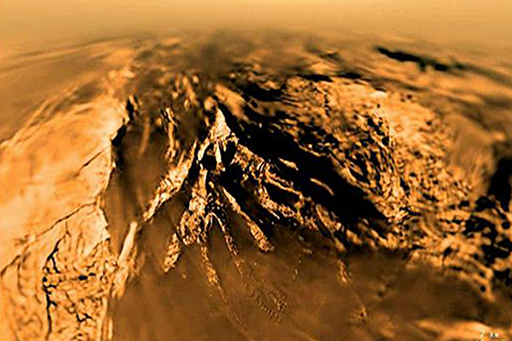2.2 The surface of Titan
The Cassini–Huygens mission was the first (and so far the only) mission to show us what lies on Titan’s surface, below its smoggy atmosphere.
Previously, scientists had speculated that condensation in the atmosphere could lead to rainfall (of methane or ethane) and that the whole surface of Titan might be covered by a global methane–ethane ocean. The Cassini orbiter can image the surface in two ways: by looking specifically at narrow ranges of near-infrared wavelengths of light that pass through the smog with only a small amount of scattering, and by transmitting a radar beam to the surface and constructing an image from the echoes (radar imaging). Radar images show more detail. Huygens was a lander carried by the Cassini–Huygens mission that descended to the ground by parachute. It got a clear view of the surface from below the smog layer, but the view was of only a tiny portion of the globe.

